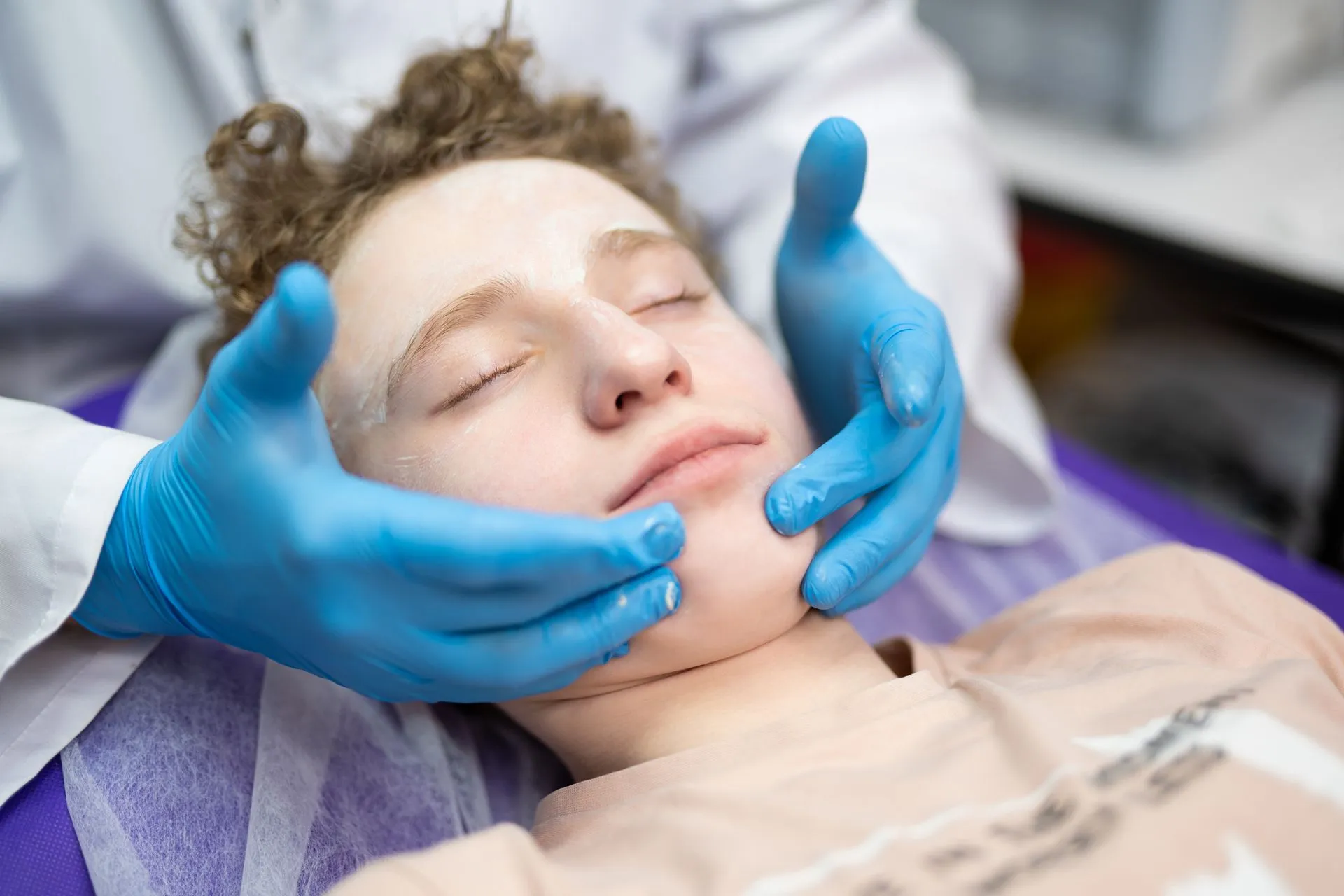
Over the years, cosmetic surgery has become increasingly popular, offering individuals the opportunity to enhance or alter their physical appearance. However, when it comes to minors seeking cosmetic procedures, the legal and ethical landscape becomes more complex. The state of Ohio provides specific regulations and considerations surrounding minors and cosmetic surgery.
Understanding Cosmetic Surgery for Minors
Legal Age Requirements
In Ohio, the ability of minors to undergo cosmetic surgery is subject to legal restrictions. Generally, individuals under the age of 18 are considered minors. While there is no specific law prohibiting minors from getting cosmetic surgery, certain legal and ethical considerations come into play.
Parental Consent
For minors seeking cosmetic surgery in Ohio, parental consent is a critical factor. Since individuals under 18 are unable to provide legal consent for medical procedures, the involvement of a parent or legal guardian is typically required.
Legal and Ethical Considerations
Emotional and Psychological Maturity
Cosmetic surgery often involves elective procedures that are not medically necessary. Determining whether a minor is emotionally and psychologically mature enough to make decisions about altering their appearance can be challenging.
Ethical considerations come into play regarding a minor’s ability to fully comprehend the potential risks, benefits and long-term implications of cosmetic surgery.
Types of Procedures
The type of cosmetic procedure sought by a minor can influence the legal and ethical considerations. Non-invasive treatments, such as laser therapy or certain injectables, are subject to less stringent restrictions compared to more invasive surgical procedures.
Ohio has been in the news recently due to its controversial bill relating to gender-affirming care of minors. House Bill 68, which passed the state legislature, has two separate acts, the Save Adolescents from Experimentation Act and the Save Women’s Sports Act. The Save Adolescents from Experimentation Act would prohibit doctors from prescribing puberty blockers and hormone replacement therapy to minors or performing gender reassignment surgery on minors, even if they have parental consent.
Ohio Governor Mike DeWine vetoed the measures on December 29, 2023, but his veto was overturned by the Ohio House on January 10, 2024 and the Ohio Senate on January 24, 2024. It’s likely the bill to ban gender-affirming care for trans minors and trans participation in women’s sports will go into effect in late April 2024.
Medical Necessity vs. Cosmetic Enhancement
Medical necessity can be a determining factor in whether a cosmetic procedure is deemed appropriate for a minor. If a procedure is deemed medically necessary to address a health issue or improve a patient’s quality of life, the ethical considerations may shift.
However, distinguishing between medical necessity and cosmetic enhancement can be a complex process, and the decision may vary depending on the medical professional and the specifics of each case.
Informed Consent
Informed consent is a cornerstone of medical ethics, ensuring that individuals are fully aware of the risks, benefits and alternatives before undergoing a medical procedure. When it comes to minors, ensuring that both the minor and their parent or legal guardian fully understand the implications of the cosmetic procedure is crucial.
Medical professionals must take extra care to communicate effectively with minors, using age-appropriate language and ensuring that the minor feels comfortable asking questions and expressing concerns.
Case Studies: Real-World Examples
Case 1: Reconstructive Surgery for Medical Reasons
In some instances, minors may seek cosmetic surgery for reconstructive purposes due to congenital conditions, or illnesses that resulted in disfigurement or injuries. Restorative cosmetic procedures may be viewed differently from purely elective cosmetic surgeries.
Real-world examples may include corrective surgery for congenital abnormalities or reconstructive procedures following trauma from an auto accident.
Case 2: Non-Invasive Cosmetic Procedures
Minors may also seek non-invasive cosmetic procedures, such as laser treatments or certain injectables, for aesthetic purposes. In these cases, ethical considerations may revolve around the potential long-term effects on the minor’s self-esteem and body image.
Real-world examples could involve minors seeking treatments for issues such as acne scarring or unwanted hair.
Legal Framework in Ohio
Medical Board Regulations
The Ohio Medical Board establishes guidelines and regulations for medical professionals in the state. While these regulations may not explicitly address cosmetic surgery for minors, they often emphasize the importance of informed consent, professionalism and ethical medical practices.
Age of Majority
The age of majority in Ohio is 18, meaning individuals attain legal adulthood and can make decisions for themselves once they turn 18. Cosmetic surgeons must take into account the legal status of the patient when performing elective procedures.
Future Considerations and Trends
Evolution of Ethical Standards
As societal attitudes towards cosmetic procedures evolve, ethical standards regarding minors and cosmetic surgery may also shift. This is most apparent in the ongoing debate and legislative battles pertaining to invasive gender reassignment surgeries or hormone therapies relating to the gender identity of minors.
Do You Have a Medical Malpractice Case Against a Physician?
Medical malpractice is not confined solely to medically necessary surgeries and treatments. Patients who suffer injuries during elective cosmetic surgeries or treatments can also pursue claims against medical professionals.
There have also already been lawsuits brought by parents and adults in relation to gender-affirming care. Some detransitioners have filed lawsuits against doctors for pressuring or coercing them, many of whom were minors at the time, into pursuing hormone therapy and gender reassignment surgeries.
The topic of minors and cosmetic surgery in Ohio is a complex and nuanced, and these cases often involve complex ethical and medical considerations.
The Buckeye Law Group is committed to taking legal action if required to secure the compensation for parents and patients who were injured by the actions of doctors and other medical professionals. Dial 1-800-411-PAIN or contact us on our website today for additional information and to arrange a complimentary case consultation with one of our lawyers today.
Understanding Liability in Railroad Worker Accidents
Working on the railroad remains one of the most dangerous jobs in America. Between moving equipment, heavy machinery, and exposure to hazardous materials, the risk of injury is substantial. When
Legal Options for Victims of Red Light Accidents
Every driver knows that red means stop—but when someone chooses to ignore that basic rule, the results can be devastating. Red light accidents are among the most violent and deadly
Motorcycle Accident Claims: What Injured Riders Need to Know — Q&A with Buckeye Law Group
Q: Why are motorcycle accidents often more serious than car accidents?Motorcyclists are far more vulnerable on the road due to their lack of physical protection. When accidents happen, the injuries
Stroke Misdiagnosis: When Delay in Care Becomes a Life-Threatening Mistake
A stroke is one of the most urgent medical emergencies a person can experience. When recognized early and treated promptly, the damage caused by a stroke can be minimized or
Understanding Nerve Injuries Caused by Medical Malpractice: Q&A with Buckeye Law Group
Q: How serious are nerve injuries caused by medical negligence?Nerve injuries can be devastating—not just physically, but also emotionally and financially. They often lead to long-term disability, chronic pain, and
Why Running Red Lights Is One of the Deadliest Driving Behaviors
Every day, reckless drivers put lives at risk by running red lights. This dangerous driving behavior is responsible for thousands of serious injuries and fatalities each year. If you or
How Railroad Crossing Negligence Leads to Fatal Accidents
Railroad crossings are some of the most dangerous intersections on the road. When safety precautions fail due to negligence, tragic accidents can occur, often resulting in catastrophic injuries or fatalities.
Shoulder Dystocia: Birth Injury Risks and Legal Options
Shoulder dystocia is a serious birth complication that occurs when a baby’s shoulder becomes trapped behind the mother’s pelvic bone during delivery. This emergency situation can lead to nerve damage,
Medication Errors: Understanding the Risks and Legal Options
Medication errors are a serious issue in healthcare, causing thousands of injuries and deaths each year. Whether it’s a doctor prescribing the wrong drug, a pharmacist mislabeling a bottle, or
How Red Light Cameras Help Prevent Intersection Crashes
Intersections are some of the most dangerous areas on the road. Every year, thousands of accidents are caused by drivers who run red lights—often leading to serious injuries or fatalities.
